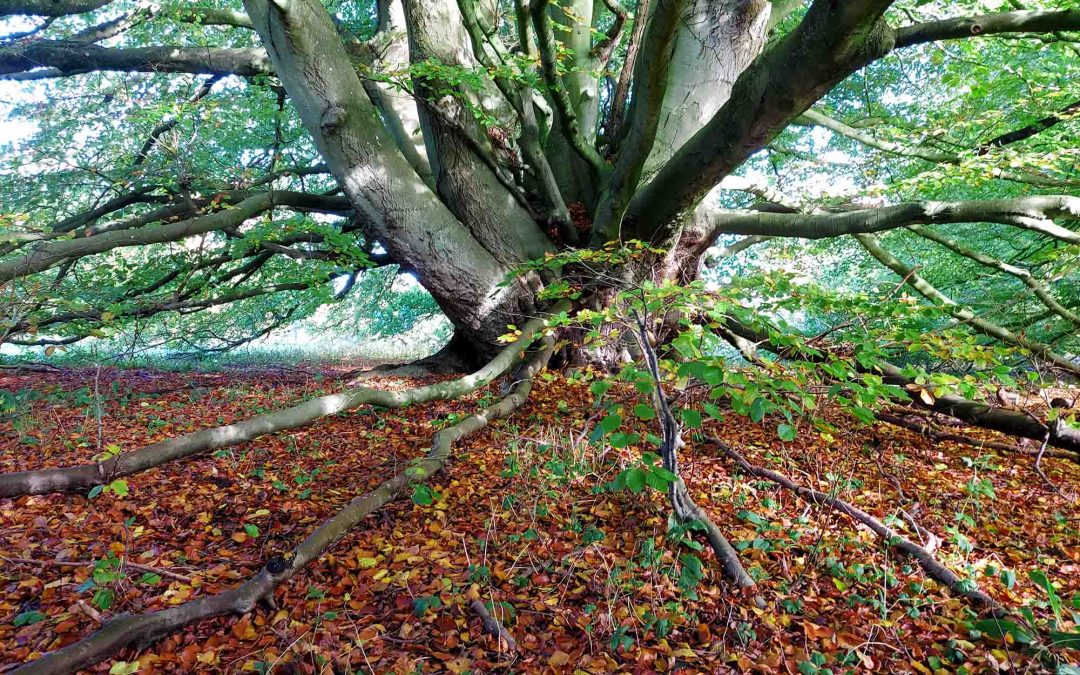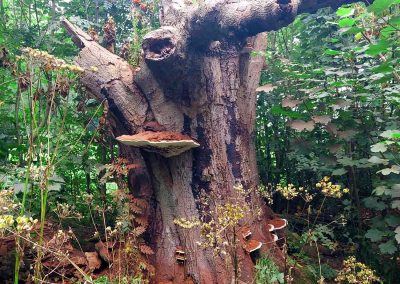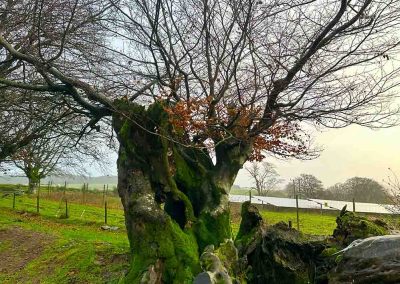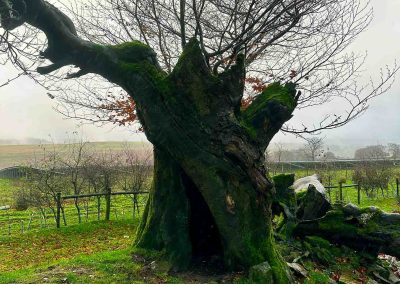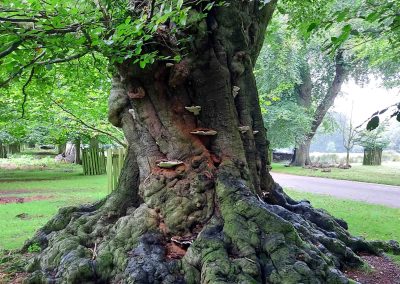In the heart of ancient landscapes and historical sites, a silent witness to the passage of time stands tall—the ancient and veteran trees. These majestic specimens, often hidden in plain sight, bear the scars of centuries and hold within their gnarled branches the tales of generations past.
What classifies as an ‘ancient tree’?
The age at which you call a tree ancient depends on many things, including the species of tree and where it grows.
The ancient tree forum state that “A birch tree could be considered as ancient at 150 years old, for example, but an oak tree would not be thought of as ancient until it’s at least 400 years old. Yew trees can live for thousands of years, so are not defined as ancient until they are 800 years old”.
What’s the difference between an ‘ancient tree’ and a ‘veteran tree’?
Unlike an ancient tree, a veteran tree can be any age and will include characteristics such as a low, fat and squat shape, a large stem width compared with others of the same species and hollowing/ decay of the trunk (not always visible). These may not just be due to age, but could result from natural damage, management, or the tree’s environment. Ancient trees are all veterans, but not all veterans are ancient. What sets veteran and ancient trees apart from other trees in our environment is their unique combination of age, size, and ecological value.
These trees may have weathered centuries, surviving wars, climate fluctuations, and human interventions. Their significance extends beyond mere botanical marvels; they are living chronicles of our shared history.
The Woodland Trust’s records
The Ancient Tree Inventory from the woodland trust meticulously catalogues these arboreal treasures, ensuring their recognition. The veteran status is bestowed upon trees that have surpassed their prime and may have entered a phase of decline, displaying the captivating features of age like hollowing, decaying wood, splits, cracks, water pockets and so on.
These trees are ecological powerhouses, hosting a myriad of organisms within their aging bark and decaying wood. Fungi, insects, birds, and mammals find refuge and sustenance in the complex ecosystems that veteran trees foster. In fact, their ecological importance often rivals their historical significance.
To truly appreciate a veteran or ancient tree is to understand its role as a living monument. Each branch tells a story, and every hollow signifies a moment in time. The scars on their trunks are not wounds but badges of honour, earned through years of enduring storms, providing shade to weary travellers, and witnessing the ever-changing world around them.
Preserving ancient and veteran trees
Preserving veteran trees is not just an act of conservation; it is a commitment to safeguarding our cultural and natural heritage. Initiatives aimed at protecting these ancient giants ensure that future generations can marvel at their grandeur and connect with the past. As we stand in the presence of a veteran tree, we are humbled by its resilience and reminded that, much like these ancient sentinels, our connection to the past shapes the landscape of our present and the legacy we leave for the future.
To find out more visit the Ancient tree Forum https://www.ancienttreeforum.org.uk/

